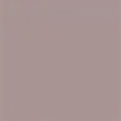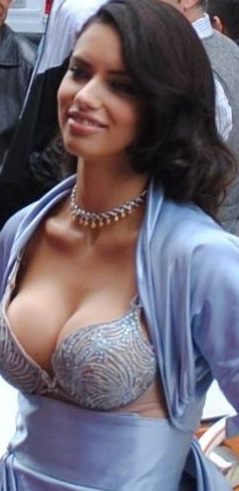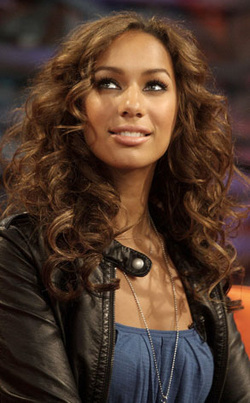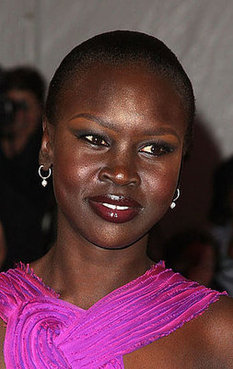Bright and soft refer to how much a color is itself, and not grey.
A color that seems to have no grey in it is bright. The technical term for this is saturated.
Consider this red:
A color that seems to have no grey in it is bright. The technical term for this is saturated.
Consider this red:
It's a neutral red - meaning it's not particularly bluish and not particularly yellowish.
And it's neither particularly light or particularly dark.
But it is exceptional in one way: it's very, very bright. Which is to say it's very, very red. It doesn't look a bit faded or greyed. Think of it as pure pigment, or red laser light.
Now, here's the red, but moved a few steps away from purity and toward grey:
And it's neither particularly light or particularly dark.
But it is exceptional in one way: it's very, very bright. Which is to say it's very, very red. It doesn't look a bit faded or greyed. Think of it as pure pigment, or red laser light.
Now, here's the red, but moved a few steps away from purity and toward grey:
It's not lighter or darker - if it appears so to you, it's an illusion.
But it is somewhat less... itself.
Color analysis people will say it's softened, or muted, or faded, or muddied, or less clear, or duller. The proper way to say it is it's less saturated. But these are all ways of saying the same thing: the color is closer to to grey.
(Don't worry yourself too much about what moves a color closer to grey. Technically, you do it by mixing in the color's opposite, which in this case would be pure green. But focusing on that fact can just confuse you. For me, it's easier to imagine that one does it by adding grey to the color. And so we say that a color has been greyed.)
If we move this same red very, very close to grey, we get this:
But it is somewhat less... itself.
Color analysis people will say it's softened, or muted, or faded, or muddied, or less clear, or duller. The proper way to say it is it's less saturated. But these are all ways of saying the same thing: the color is closer to to grey.
(Don't worry yourself too much about what moves a color closer to grey. Technically, you do it by mixing in the color's opposite, which in this case would be pure green. But focusing on that fact can just confuse you. For me, it's easier to imagine that one does it by adding grey to the color. And so we say that a color has been greyed.)
If we move this same red very, very close to grey, we get this:
Again, it's not more bluish or more yellowish. And it hasn't been lightened or darkened. But it's barely recognizable as red now, because it's been softened - or we could say greyed - so very much. At this point, it looks more like a grey with some red in it.
Here is the same red in a range of saturation, with completely saturated - completely bright - on the far right, and completely desaturated - completely soft - on the far left.
Here is the same red in a range of saturation, with completely saturated - completely bright - on the far right, and completely desaturated - completely soft - on the far left.
So how do you apply this understanding to your season?
Well, all of your season's colors are at approximately the same level of saturation. Some of your colors are lighter and some are darker, but they're all equally faded (or not faded).
So when you understand how bright or soft your season's colors are, it helps you decide whether a new color is right for you.
Summer colors and Autumn colors are generally soft rather than bright. And as the names might imply, the colors of Soft Summer and Soft Autumn are the very softest of all 12 seasonal palettes. If you are a Soft Autumn or a Soft Summer, faded colors bring you to life - and your worst colors are those that are too bright.
Here are some Soft celebrities looking vibrant and healthy in beautifully faded colors:
Well, all of your season's colors are at approximately the same level of saturation. Some of your colors are lighter and some are darker, but they're all equally faded (or not faded).
So when you understand how bright or soft your season's colors are, it helps you decide whether a new color is right for you.
Summer colors and Autumn colors are generally soft rather than bright. And as the names might imply, the colors of Soft Summer and Soft Autumn are the very softest of all 12 seasonal palettes. If you are a Soft Autumn or a Soft Summer, faded colors bring you to life - and your worst colors are those that are too bright.
Here are some Soft celebrities looking vibrant and healthy in beautifully faded colors:
Spring colors and Winter colors, on the other hand, are bright instead of soft. And as you'd expect, Bright Spring and Bright Winter have the very brightest colors of all. If you are a Bright Spring or a Bright Winter, your least flattering colors are faded and dull. Even the neutrals in your palette are clear and sharp.
Here are some Bright celebs looking balanced and well in exciting, saturated colors:
If you know you're a Soft, always ask of a color: "Is this soft enough?" Everything you put on should be a greyed version of itself. Faded denims and brushed metals are your friends.
If you know you're a Bright, always ask of a color: "Is this bright enough?" Does it vibrate your eye? Think Crayola. Reflective or shimmery fabrics and glossy finishes are helpful for you.
If you don't know your season yet, you might narrow in on it by noticing whether you look healthy in brighter colors or softer colors. If bright fuchsia or neon green are good for you, you may be a Winter or a Spring. If gentle beige or dusty lavender are kind to your skin, you may be an Autumn or a Summer.
P.S. Understanding brightness and softness is also important for picking prints. When two colors are very small and very close to each other, they blend together in the viewer's eye. So a plaid woven from bright red and bright blue will still read as rather soft to someone looking at it from a foot or two away. For this reason, Springs and Winters generally do well to avoid plaids and other patterns of blended colors, while Autumns and Summers usually look fab in them.












